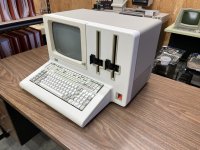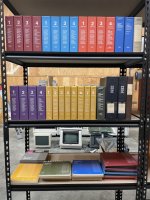Greetings,
I acquired an IBM System 23 "Datamaster" a couple of weeks ago. I have found many people over the not so many places where this computer is being discussed where they stated its non-reparability (the motherboard was designed as FRU, after all).
As I am in process to repair mine, an exhaustive study of the boards is being made. At the end of this phase, I should have a preliminary technical documentation and for the sake of completeness I would like to ask members of this forums who currently have (or had in the past) specimens of this systems with issues with the boards if they would share their knowledge, as small it could be. That should help me prepare a list of malfunctions which would help me in getting some directions to achieve fixes for them.
Regards
I acquired an IBM System 23 "Datamaster" a couple of weeks ago. I have found many people over the not so many places where this computer is being discussed where they stated its non-reparability (the motherboard was designed as FRU, after all).
As I am in process to repair mine, an exhaustive study of the boards is being made. At the end of this phase, I should have a preliminary technical documentation and for the sake of completeness I would like to ask members of this forums who currently have (or had in the past) specimens of this systems with issues with the boards if they would share their knowledge, as small it could be. That should help me prepare a list of malfunctions which would help me in getting some directions to achieve fixes for them.
Regards


